COACH - PROFESSORSHIP AT THE ACADEMY OF FINE ARTS, VIENNA
Design Studio IKA Academy of fine Arts, Vienna
Vertical Studio Winter Semester 2019/20
Design Studio IKA Academy of fine Arts, Vienna
Vertical Studio Winter Semester 2019/20
Michelle Howard and Christian Fröhlich
BURNING DOWN THE HOUSE I -CONSTRUCTION AND COMBUSTION
(Part of the years undertaking at the IKA called HITZE Takes Command)Burning Down the House-I, addresses Hitze in that it investigates the of fire and our ambiguous relationship with it. It also addresses the state of crisis that Architects currently find themselves in – Should we be the accomplices of growth capitalism and continue as usual to build wastefully, or could we act and transform our profession. Could our path to a new equilibrium be cleared by burning down the house and sorting through the cinders embers and ash?
Wildfires have consumed tracts of forest from the Amazon to the Arctic at an unprecedented scale. Our house is burning down, and the resulting massive forest clearings have unbridled HITZE. Forest clearings are central to Western theories about the origins of architecture where a primitive tribe arrives there to find the trees which have fallen to make the clearing. The parable invariably describes only two possible outcomes, they use the wood to build a shelter or to build a bonfire. This semester we looked at other possibilities and took an unbiased journey through the phenomena of the wildfire. Using the tools of the architect we looked closely, investigating and reconstructing its behaviour in the forest and in the city.
In a conscious effort of calibration between conjecture and activism, we embarked upon the step by step construction of soil using traceable and low impact production processes. Together with a collier family we transformed wood into charcoal. We constructed a composter and made humus. They were the foundation blocks of the enriched soil, the secret weapon for the following semester’s undertaking.
We traced the paths of 18 Austrian forest wildfires using data the Institute for Silviculture and information gathered by visiting the scenes of each disaster, observing the fires traces, conducting interviews, and extracting soil and vegetation samples. Finally, we analysed it all using the tools of the architect.
Having gotten to know the forest wildfire, we used this in-depth knowledge to investigate fires in the city of Vienna and create projects which used the medium of the installation to relate what they had unearthed. Unearthing is the common thread running through these projects, from revealing the value of spaces which are the result of fire to the prying open of sealed ground. We began in the treetops and came down to the earth.
Thanks to:
The Hochecker Family, for their guidance and allowing us to spend so much time with them in the construction of the traditional wood charcoal kiln. Johannes Tintner Olifiers (BOKU, Institute for Physics and Material Science) for revealing to us more clearly just how interconnected forest ecosystems are. Harald Vacik and Mortimer Müller ( BOKU, Institute of Silviculture) for generously providing us with detailed information on our forest fires and their patience in responding to our constant requests.
Studio Burning Down the House I
Construction of a Wood Charcoal Kiln
Together with the Hochecker family we constructed a traditional wood charcoal kiln in a traceable and low-impact production cycle. Over 6 weeks we; (I) selectively felled trees, (II) cut, split and stacked the wood in layers, (III) covered it with evergreen branches, (IV) then with charcoal dust and earth, (V) carried flames up to activate the process of pyrolysis, (VI) Cared for the kiln, (VII) Extracted the wood charcoal. This process is classed as Intangible World Heritage by UNESCO
Studio Burning Down the House I
Wildfire Case Studies
The Institute of Silviculture at University of Natural Resources and Applied Life Sciences (BOKU) Vienna has compiled a comprehensive databank on Austrian forest fires. It contains the written and transcribed records of the municipalities and fire brigades as well as metadata on probable cause, location, area size, affected species, etc. are continuously recorded in a database. We enriched this information by visiting the scenes of each disaster, observing the fires traces, conducting interviews, and extracting soil and vegetation samples. Finally we analysed it all using the tools of the architect
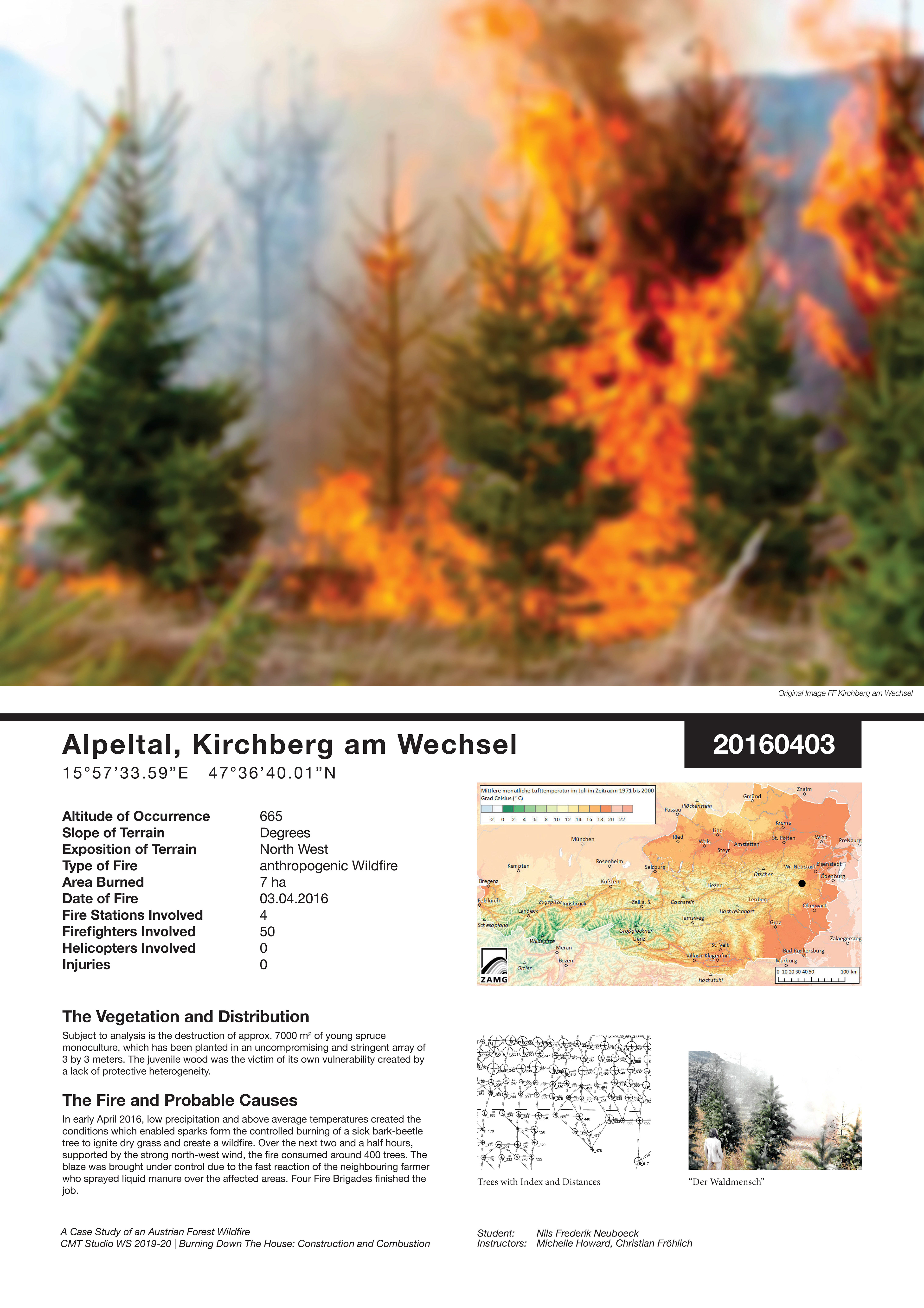


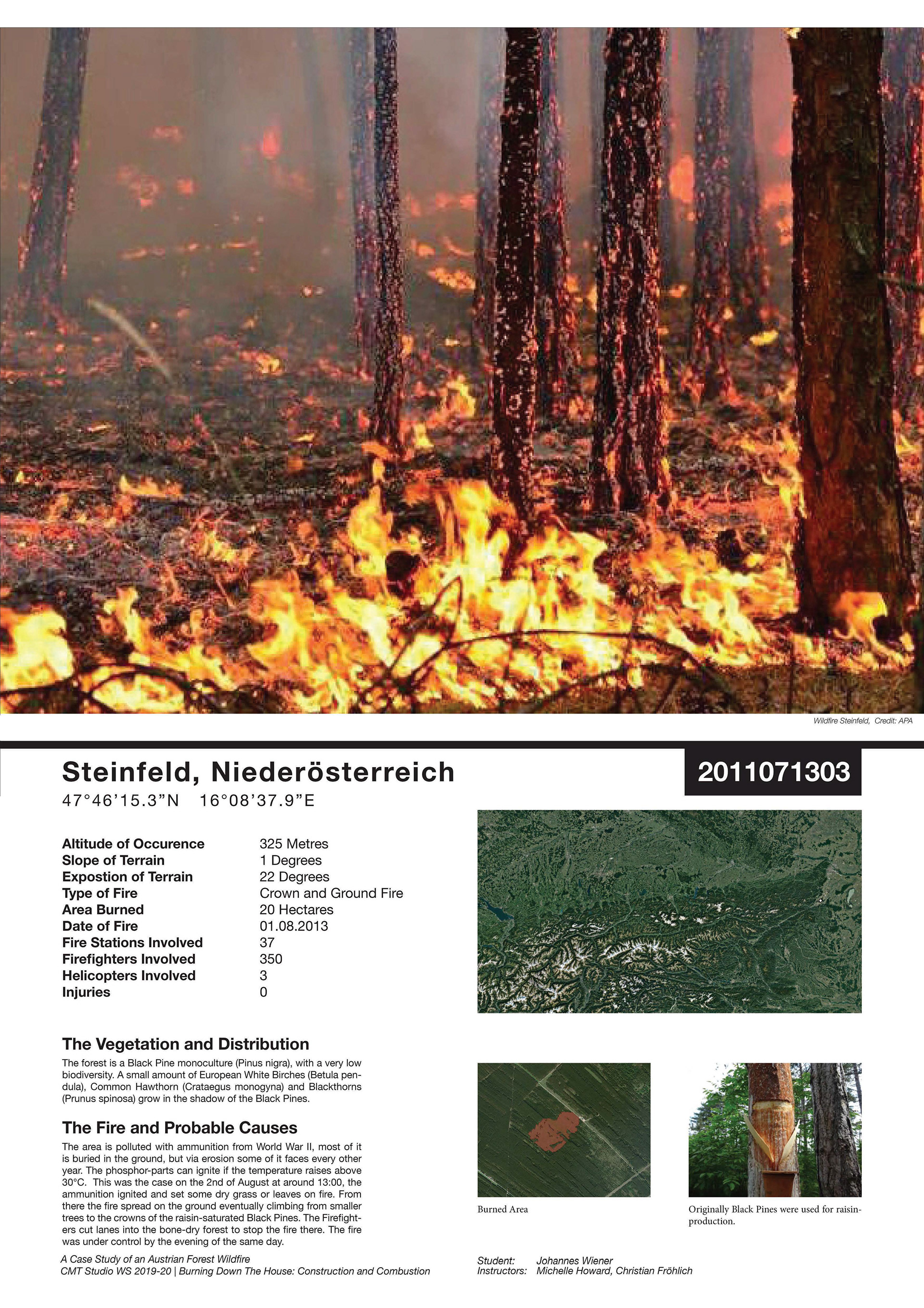







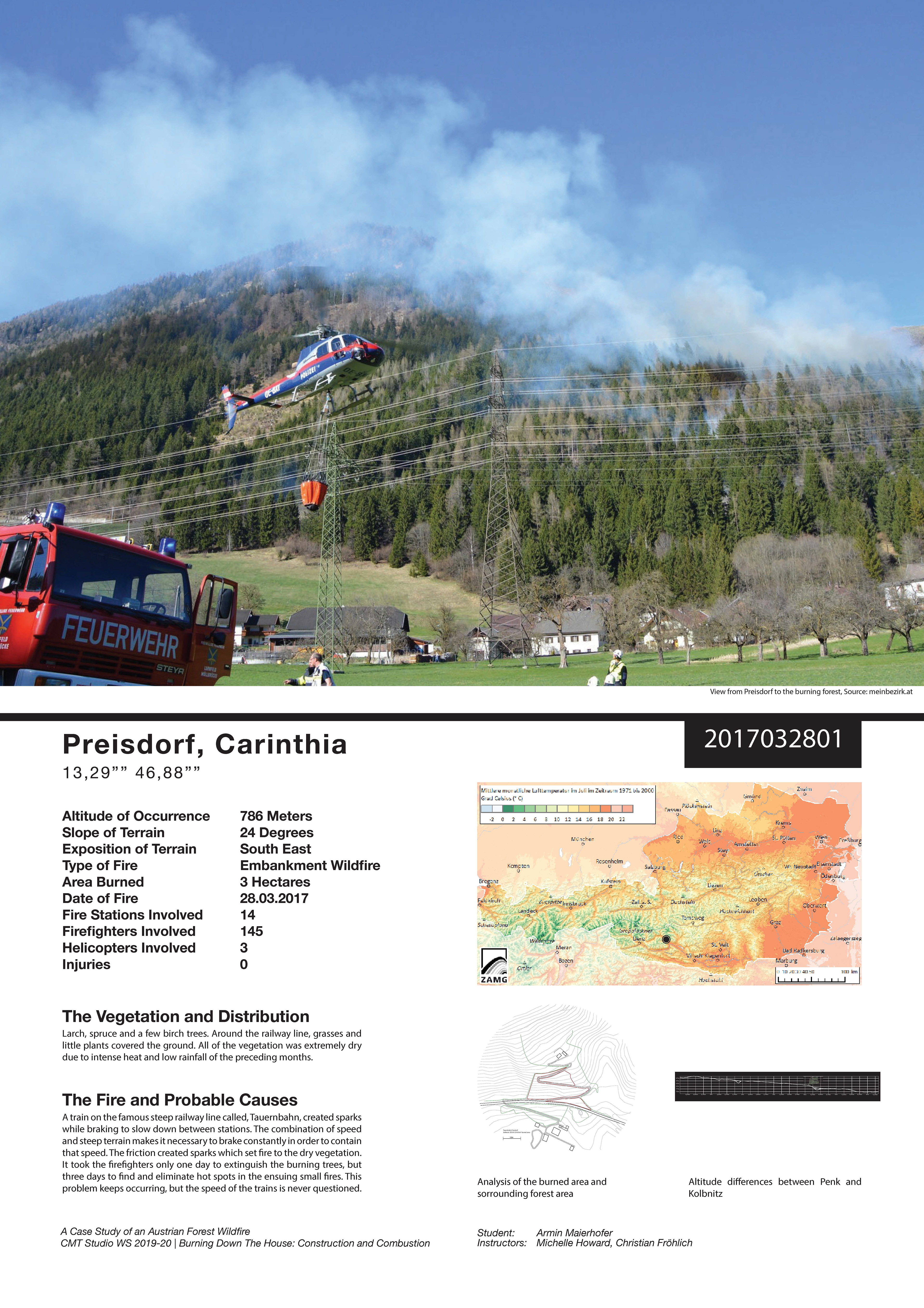


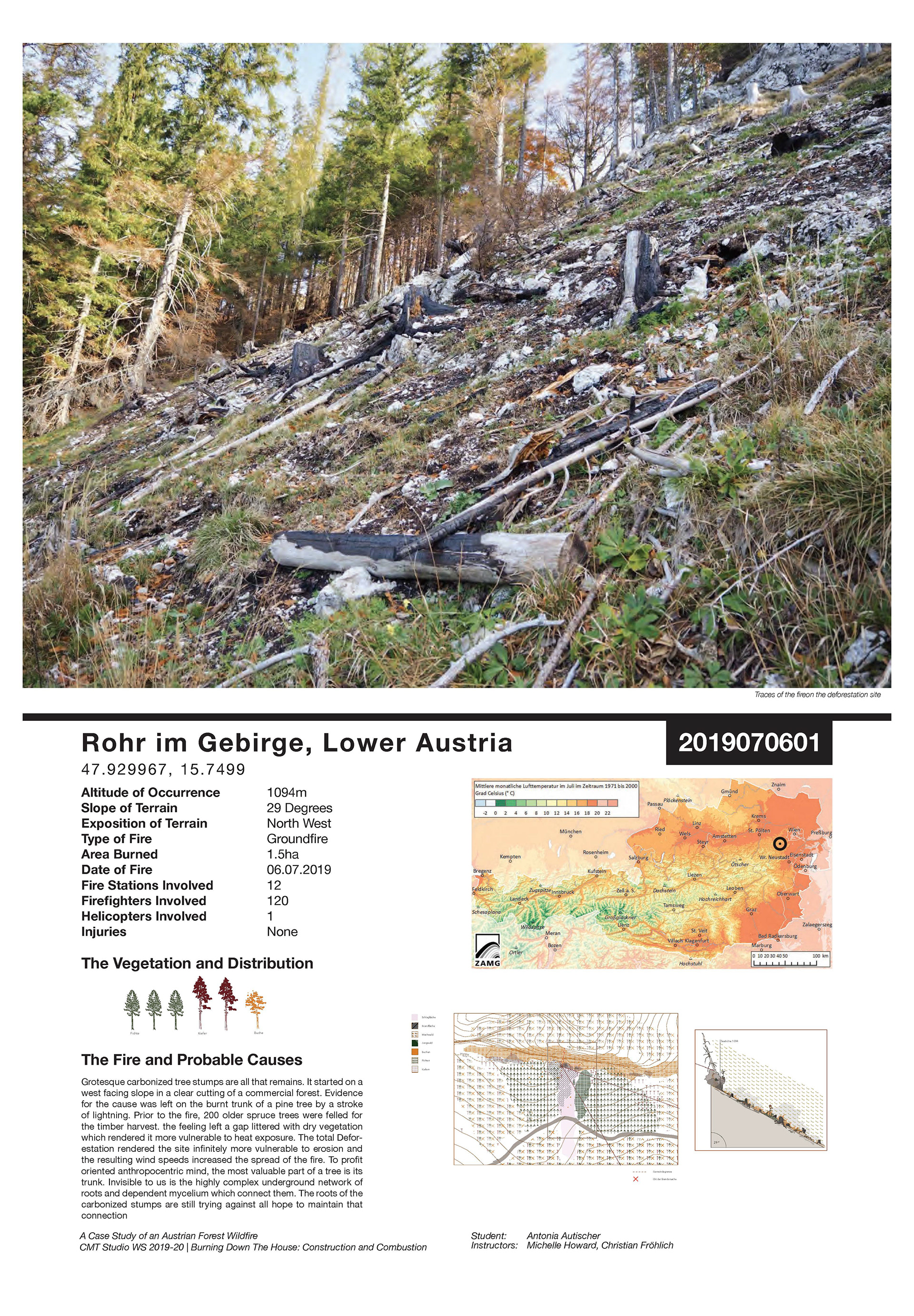


Studio Burning Down the House I - Composter
We made a new home for micro-organisms by constructing a composter from found materials. This we maintained and nurtured in the studio using waste food, paper and organic model materials. Along with pungent smells and airborne wildlife, it generated a near constant heat of 60 degrees Celsius.
Studio Burning Down the House I – FLYSPACE - Johannes Wiener
Studio Burning Down the House I – Anatomy of A Wildfire - Johannes Wiener



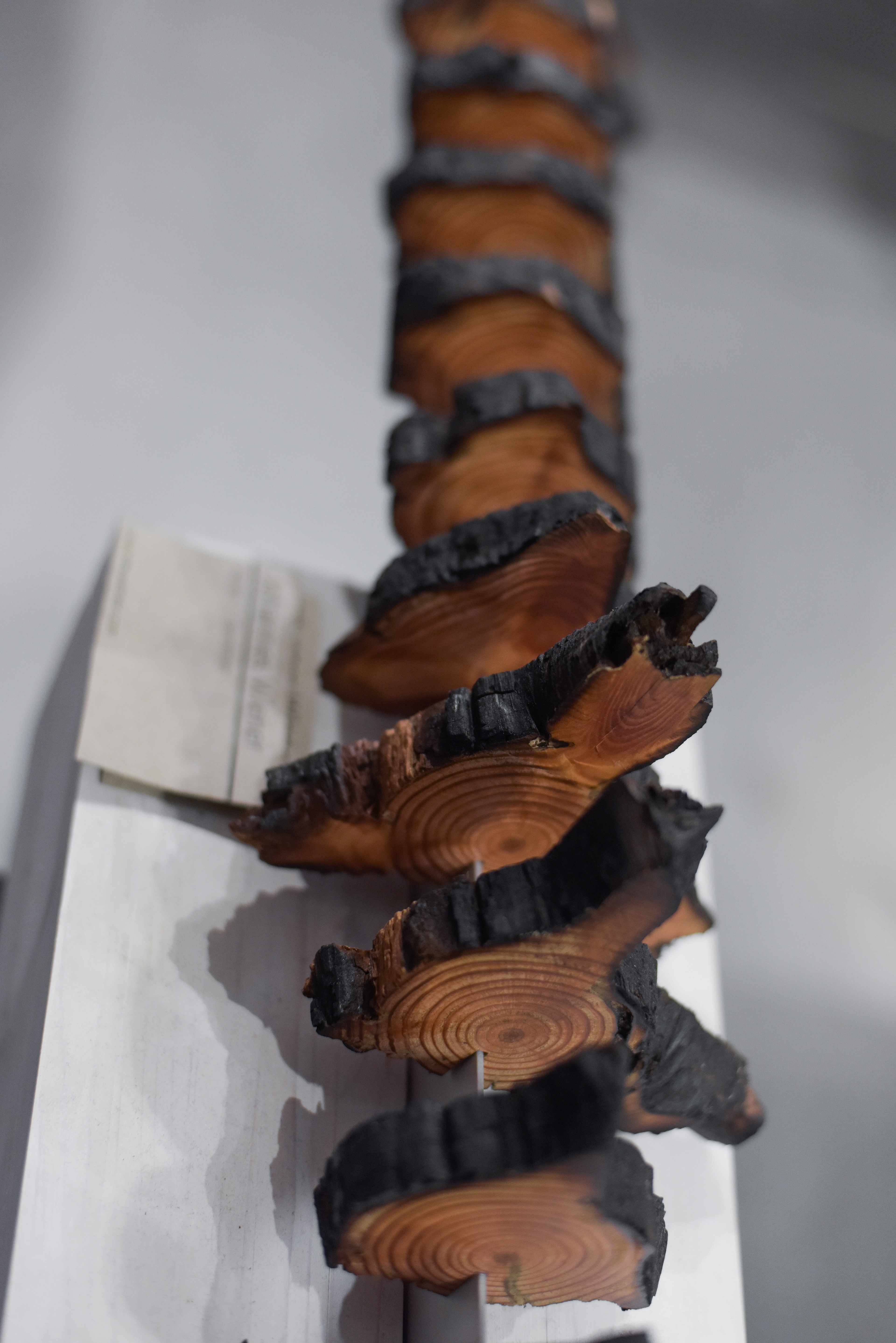










Studio Burning Down the House I – Anatomy of A Wildfire - Johannes Wiener
Studio Burning Down the House I - The Beauty Keeps Striking Me
Nils Neuböck
On the morning of the 3rd of April 2020, a truck arrives at the scene of Wildfire 20160403_02. In it is a thermal device which will change the topology of the forest. Over the next 8139 days, one spruce tree will be felled daily. The commodity’s monetary value is replaced by the ephemeral creation of radiant space. This piece explores thermal situations and dependencies and our ambiguous relationship with material prosperity, self-contentment, light heartedness and uselessness.








Studio Burning Down the House I -
The Beauty Keeps Striking Me - Nils Neuböck
An urban fire raged on the 11th of May 2019 and destroyed the entire roof and upper apartments of a 215-metre-long apartment building in the 11th district. A total Deforestation. But from the flames emerges a landscape interrupted by high chimneys usually invisible but now unveiled. Black Soil is the catalyst - little by little plants emerge, taking over the spaces in between the chimneys. Roots make their way through cracks in the building, chimneys become trees, from ash new life is grown..



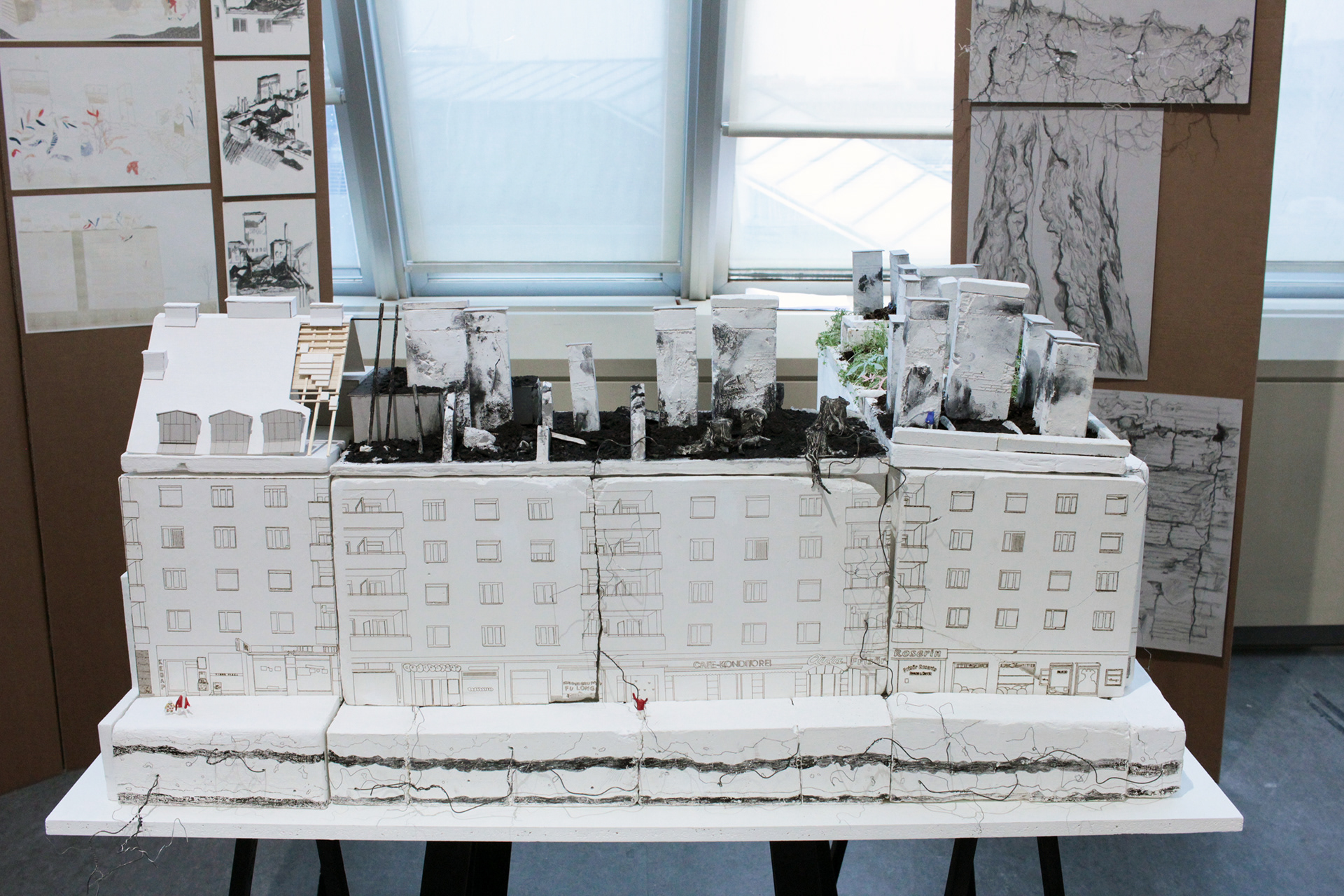

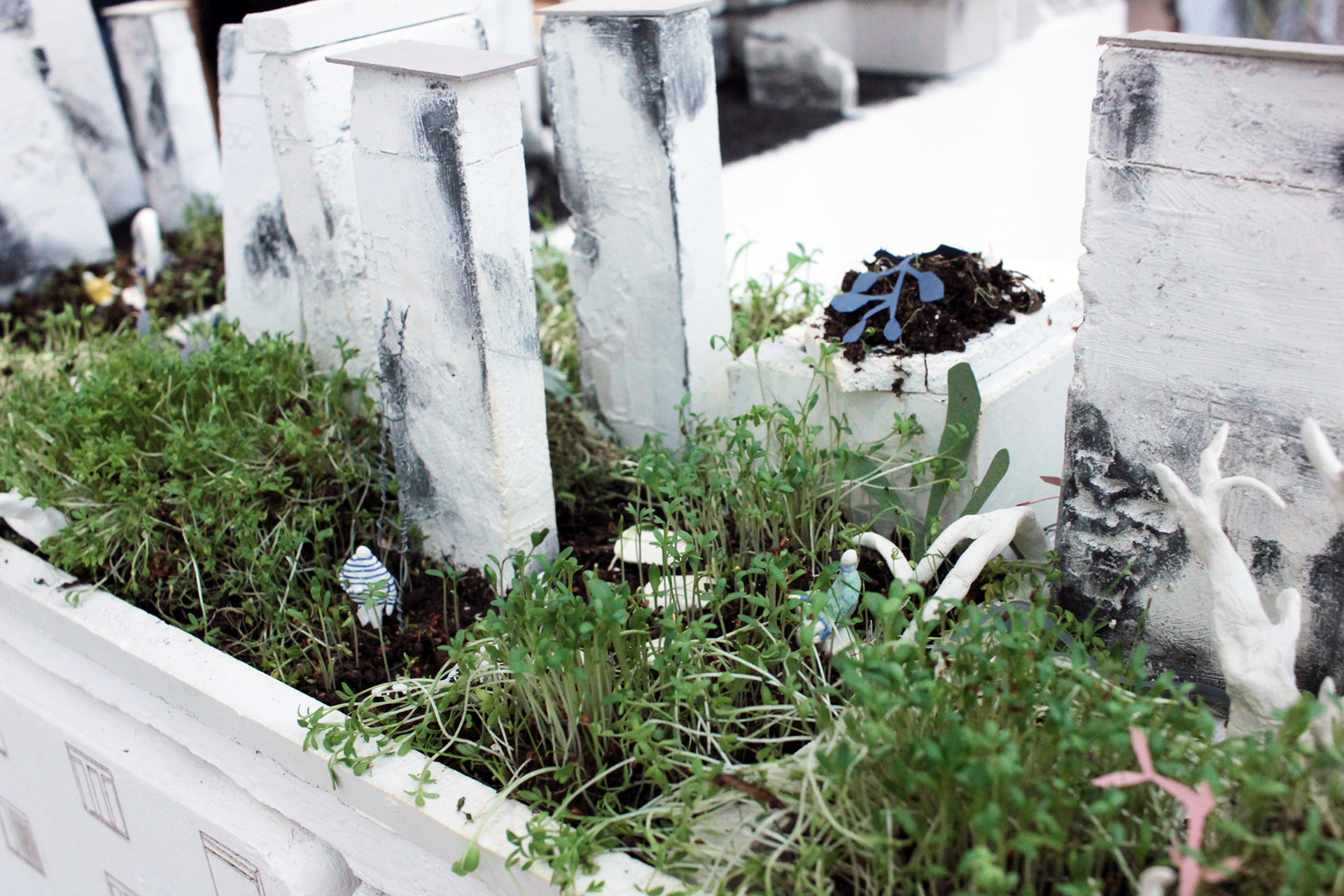



STUDIO BURNING DOWN THE HOUSE I –
WILDFIRE NOVEMBER 1938 - HELENA SCHENAVSKY
The path of the November Pogrom 1938 can be compared to that of a forest fire– From early morning until noon, SS troops set fire to nearly all synagogues and prayer houses in Vienna. Fire brigades were ordered to let them burn but to protect their surroundings. The model shows the 17 synagogues with their floor plans, the cord the time the fire brigade arrived.








STUDIO BURNING DOWN THE HOUSE I –
WILDFIRE NOVEMBER 1938 - HELENA SCHENAVSKY
STUDIO BURNING DOWN THE HOUSE I –
A FOREST AND A CITY ARE THE SAME - NORMUNDS PUNE
I cannot find peace, neither in Nature nor in the City. I also don’t know whether I’m a man, a Giant or someone else. Loudness and destruction reassure me, therefore I brake and I burn. I need it in order to move forward. I want it to engulf me. I want to push myself to an exhaustion from which I could not recover. I want to be destroyed together with it.



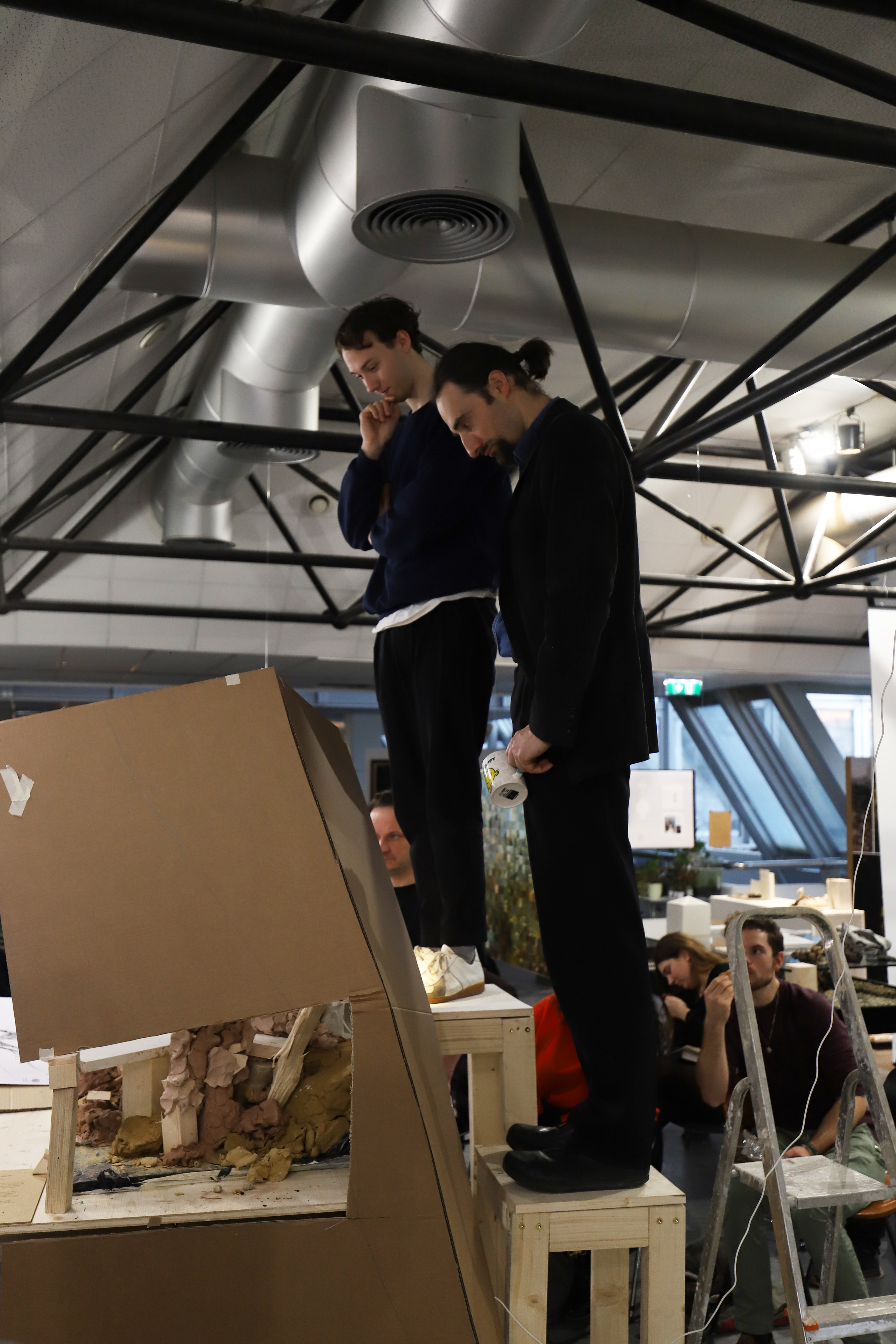





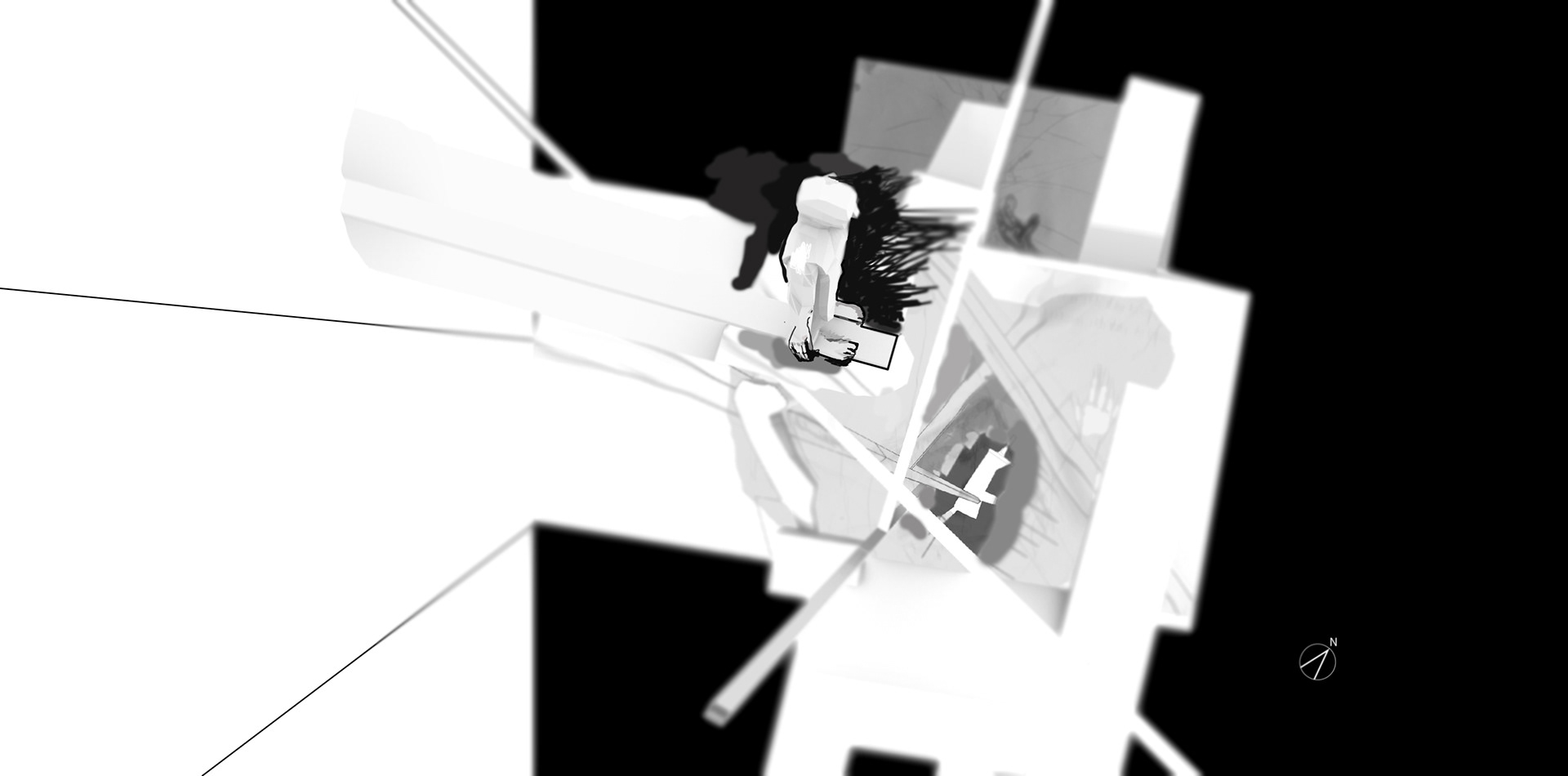

STUDIO BURNING DOWN THE HOUSE I –
A FOREST AND A CITY ARE THE SAME - NORMUNDS PUNE
STUDIO BURNING DOWN THE HOUSE I –
SOPHIE’S GARDEN (AN ALTERNATIVE FUTURE) - SEBASTIAN SEIB
In the heart of Vienna‘s third district lie the ruins of the erstwhile Sofiensäle, an oddity in the neighbourhood. On August 16th, 2001 a fire initiated its final transformation ( It began as Russian baths and became a ballroom) into a garden. The garden and the remaining walls provide a place of respite and connection, refuge from the heat of the city and a space for reverie.






STUDIO BURNING DOWN THE HOUSE I –
SOPHIE’S GARDEN (AN ALTERNATIVE FUTURE) - SEBASTIAN SEIB
w